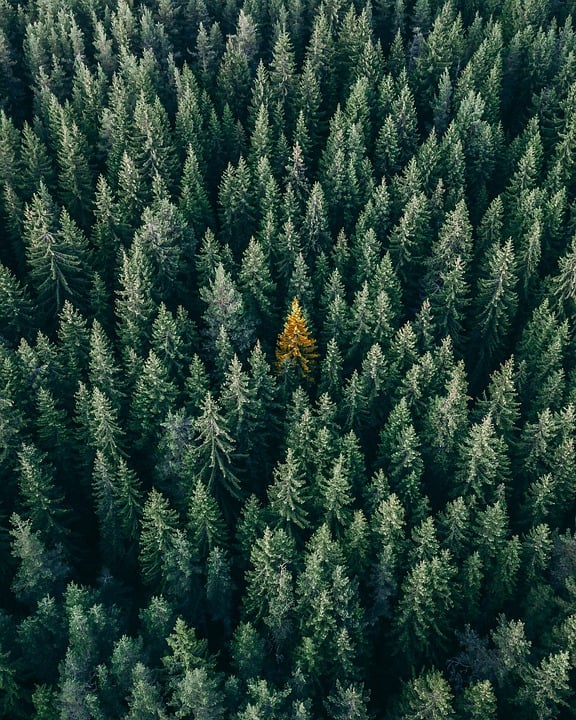Forest Loss and Climate Change: A Vicious Cycle
In the intricate web of Earth’s ecosystems, forests play a pivotal role in maintaining the planet’s health. These verdant expanses are not just a source of biodiversity but also act as vital carbon sinks, absorbing vast amounts of carbon dioxide (CO2) from the atmosphere. However, the accelerating rate of forest loss, primarily due to human activities, is creating a feedback loop that exacerbates climate change—a vicious cycle that threatens the well-being of our planet.
The Role of Forests in Climate Regulation
Forests, especially tropical rainforests, are often referred to as the "lungs of the Earth." They sequester carbon by absorbing CO2 during photosynthesis and storing it in biomass (trunks, branches, leaves, and roots) and soil. This process reduces the concentration of greenhouse gases in the atmosphere, effectively mitigating the impact of climate change. Additionally, forests influence local and global climate by regulating water cycles, maintaining soil quality, and providing a habitat for countless species.
The Drivers of Forest Loss
Despite their critical importance, forests are being lost at an alarming rate. The primary drivers of deforestation include:
-
Agricultural Expansion: The conversion of forests into agricultural land for crops and livestock is the leading cause of deforestation. This is especially prevalent in tropical regions where forests are cleared for soy plantations, palm oil production, and cattle ranching.
-
Logging: Both legal and illegal logging for timber, paper, and other wood products contributes significantly to forest degradation and loss.
-
Infrastructure Development: Urbanization, road construction, and infrastructure projects often encroach upon forested areas, leading to clearance and fragmentation.
- Wildfires: Increased temperatures and prolonged drought conditions, often linked to climate change, are making wildfires more frequent and severe, causing extensive forest loss.
The Feedback Loop of Forest Loss and Climate Change
The relationship between forest loss and climate change is bidirectional and reinforcing. When forests are destroyed or degraded, the carbon stored in trees and soil is released back into the atmosphere, increasing CO2 levels: a major contributor to the greenhouse effect and global warming. This release of carbon not only negates the benefits of carbon sequestration but also accelerates climate change.
Climate change, in turn, creates conditions that further exacerbate forest loss. Higher temperatures, altered precipitation patterns, and extreme weather events make forests more vulnerable to pests, diseases, and wildfires. This heightened vulnerability leads to more forest degradation and loss, perpetuating the cycle.
Breaking the Cycle: Mitigation and Adaptation Strategies
Addressing the vicious cycle of forest loss and climate change requires a multifaceted approach:
-
Conservation and Sustainable Management: Protecting existing forests through conservation efforts and sustainable management practices is paramount. This includes establishing protected areas, enforcing anti-logging regulations, and promoting sustainable forest management techniques.
-
Reforestation and Afforestation: Reforestation (replanting trees in deforested areas) and afforestation (planting trees in areas that were not previously forested) can help restore lost forest cover and enhance carbon sequestration.
-
Agroforestry: Integrating trees into agricultural landscapes can improve biodiversity, soil quality, and water retention while providing economic benefits to farmers.
-
Global Cooperation and Policy: International cooperation is crucial in combating deforestation and climate change. Policies like the United Nations REDD+ (Reducing Emissions from Deforestation and Forest Degradation) aim to provide financial incentives to developing countries to preserve their forests.
- Community Engagement and Education: Engaging local communities in forest conservation and providing education on the importance of forests can foster stewardship and sustainable practices.
Conclusion
The vicious cycle of forest loss and climate change is a complex but urgent issue that demands immediate and coordinated action. By understanding the interconnectedness of these phenomena and implementing comprehensive strategies to address both, we can work towards a sustainable future where forests continue to flourish and mitigate the impacts of climate change. The health of our planet, and all who inhabit it, depend on our efforts to break this cycle.
For more information on how you can help protect forests and combat climate change, visit:
- United Nations REDD+ Programme
- World Wildlife Fund (WWF) Forest Conservation
- The Nature Conservancy – Forests
By taking collective action, we can ensure that our forests remain vibrant, resilient, and indispensable allies in the fight against climate change.
